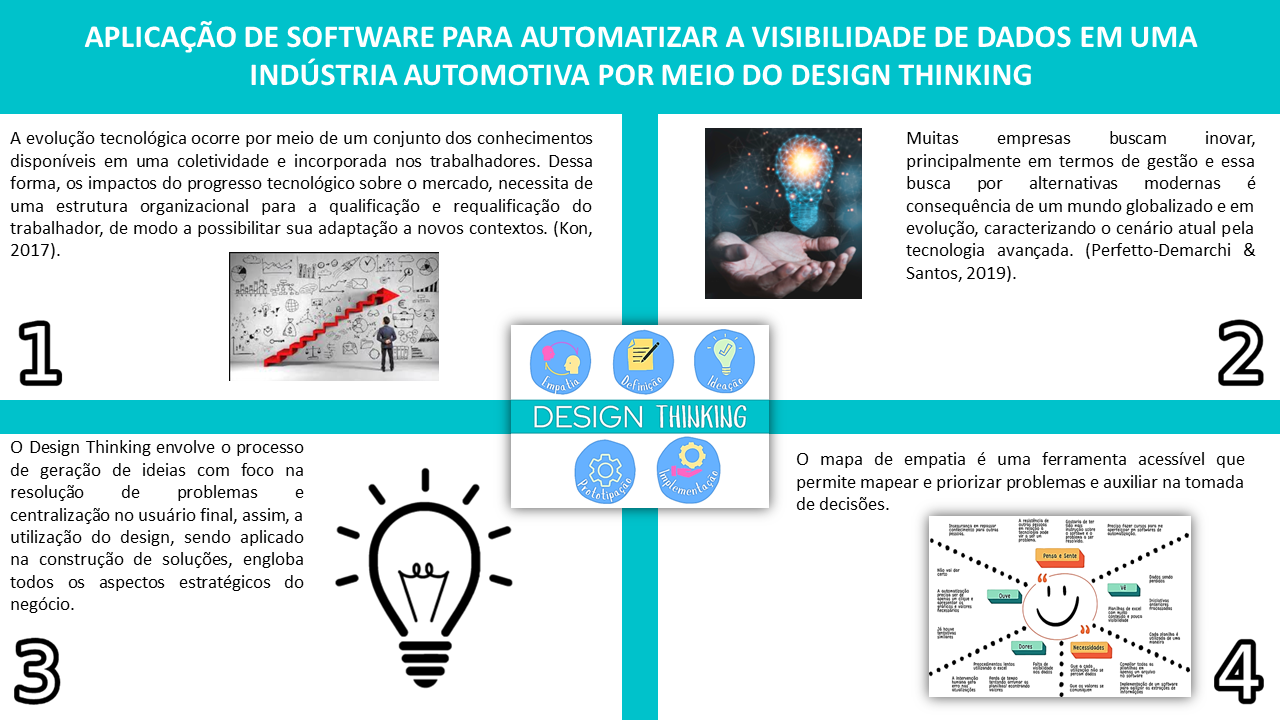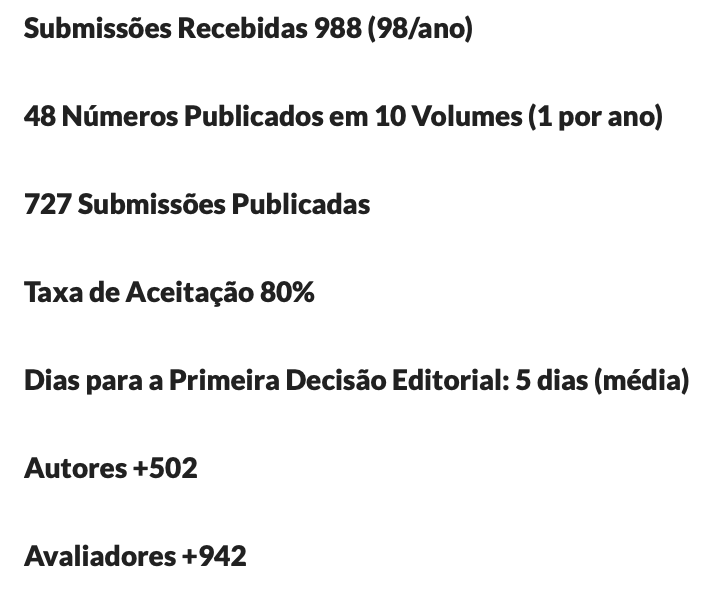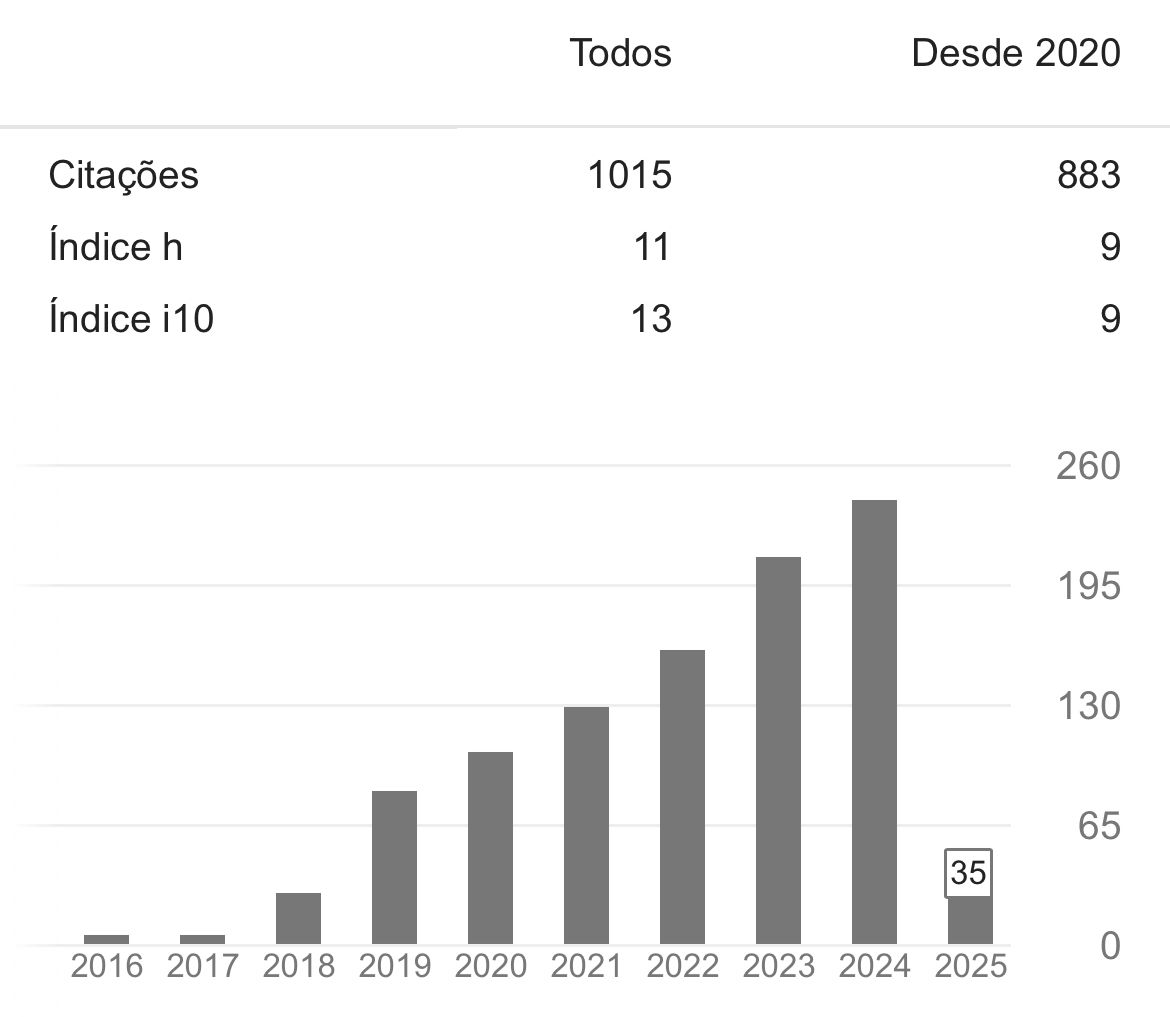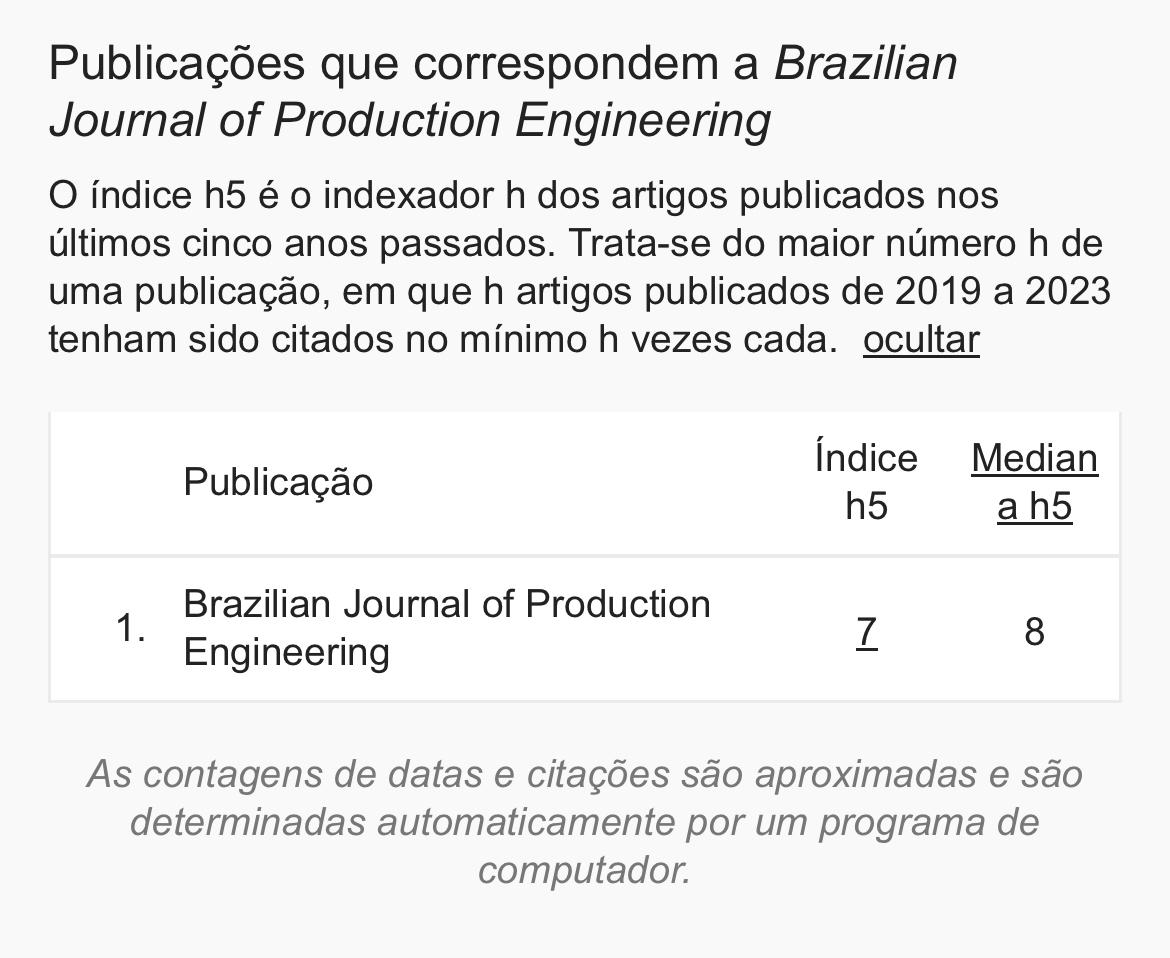Aplicação de software para automatizar a visibilidade de dados em uma indústria automotiva por meio do Design Thinking
DOI:
https://doi.org/10.47456/bjpe.v9i3.41021Palavras-chave:
Design Thinking, Software, AutomatizaçãoResumo
Este artigo descreve o desenvolvimento de uma ferramenta de análise de dados através do método Design Thinking para a automatização de tarefas em uma indústria automobilística, com foco no aumento de agilidade e visibilidade nos dados contidos na empresa. Para tal, uma análise foi realizada com 20 colaboradores, utilizando-se do método do mapa da empatia para definir os principais problemas e necessidades. Com base nos resultados, foi elaborado um protótipo do dashboard, e posteriormente, utilizado o método de questionário para validação dos testes. Com as respostas do questionário obteve-se feedbacks sobre pontos críticos e oportunidades de melhoria da plataforma. Como resultado final, alcançou-se uma ferramenta ágil, de fácil manuseio e confiável, voltada para atender as necessidades de seus usuários, ou seja, uma solução desenvolvida com base nas necessidades e experiências do usuário.
Downloads
Referências
Becattini, G. (1999). Flourishing small firms and the re-emergence of industrial districts. Proceedings of the 44th ICSB - International Council for Small Business World Conference, Naples, Italy, 20-23.
Bonini, L. A. & Sbragia, R. (2011). O modelo de Design Thinking como indutor da inovação nas empresas: um estudo empírico. Gestão e Projetos: GeP, 2(1), 3-25. https://doi.org/10.5585/gep.v2i1.36 DOI: https://doi.org/10.5585/gep.v2i1.36
Brown, T. (2008). Design thinking. Harvard business review, 86(6), 84-92. Recuperado de https://www.researchgate.net/publication/5248069_Design_Thinking
Chesbrough, H. (2012). Inovação aberta: como criar e lucrar com a tecnologia. Bookman.
Gil. A. C. (2008) Métodos e Técnicas de pesquisa social. 6. ed. São Paulo, Atlas
Gil. A. C. (2017) Como elaborar projetos de pesquisa. 6. ed. São Paulo, Atlas
Kon, A. (2017). Sobre inovação tecnológica, tecnologia apropriada e mercado de trabalho. Revista Ciências do Trabalho, 9, 1-14. Recuperado de https://rct.dieese.org.br/index.php/rct/article/view/137/pdf
Parizi, R., Prestes, M., Marczak, S., & Conte, T. (2022). How has design thinking being used and integrated into software development activities? A systematic mapping. Journal of Systems and Software, 111217. https://doi.org/10.1016/j.jss.2022.111217 DOI: https://doi.org/10.1016/j.jss.2022.111217
Pereira, D., Lanutti, J., Paschoarelli, L. C., & Pinheiro, O. (2017). Comparação de técnicas de prototipagem tradicional manual e sua importância para o design. DAT Journal, 2(2). https://doi.org/10.29147/2526-1789.DAT.2017v2i2p159-175 DOI: https://doi.org/10.29147/2526-1789.DAT.2017v2i2p159-175
Pereira, J. C. & Russo, R. de F. S. M. (2018). Design thinking integrated in agile software development: A
systematic literature review. Procedia computer science, 138, 775-782. https://doi.org/10.1016/j.procs.2018.10.101 DOI: https://doi.org/10.1016/j.procs.2018.10.101
Perfetto-Demarchi, A. P, Santos, C. (2019). Design thinking no processo de criação do conhecimento. Recuperado de https://proceeding.ciki.ufsc.br/index.php/ciki/article/view/799
Polydoro, J. (2015). Empresas que inspiram: como as ideias nascem, prosperam e produzem resultados em empresas inovadoras. Porto Alegre: Instituto Amanhã.
Prestes, M. P. (2020). Estudo exploratório sobre design thinking no desenvolvimento de software. Recuperado de https://tede2.pucrs.br/tede2/handle/tede/9427
Relvas, C. A. M. (2002). Processos de prototipagem rápida no fabrico de modelos de geometria complexa: Estudo realizado sobre o modelo anatómico da mão. Recuperado de https://hdl.handle.net/10216/13395
Silva, M. J. V., Silva Filho, Y. V., Adler, I. K., Lucena, B. F., & Russo, B. (2012). Design thinking: Inovação em negócios. Rio de Janeiro: MJV. Recuperado de
Soledade Jr., M., Freitas, R., Peres, S., Fantinato, M., Steinbeck, R., & Araújo, U. (2013). Experimenting with Design Thinking in requirements refinement for a learning management system. In Anais do IX Simpósio Brasileiro de Sistemas de Informação (pp. 182-193). SBC. Recuperado de https://sol.sbc.org.br/index.php/sbsi/article/view/5686 DOI: https://doi.org/10.5753/sbsi.2013.5686
Tidd, J. & Bessant, J. (2015). Gestão da inovação-5. Bookman Editora.
Valdrich, T. & Cândido, A. C. (2018). Mapa de empatia como proposta de instrumento em estudos de usuários: aplicação realizada na Biblioteca Pública de Santa Catarina. Revista ACB: Biblioteconomia em Santa Catarina, 23(1), 107-124. Recuperado de https://revista.acbsc.org.br/racb/article/view/1420

Downloads
Publicado
Como Citar
Edição
Seção
Licença
Copyright (c) 2023 Brazilian Journal of Production Engineering

Este trabalho está licenciado sob uma licença Creative Commons Attribution-NonCommercial-ShareAlike 4.0 International License.

Atribuição 4.0 internacional CC BY 4.0 Deed
Esta licença permite que outros remixem, adaptem e desenvolvam seu trabalho não comercialmente, contanto que eles creditem a você e licenciem suas novas criações sob os mesmos termos.
















































































